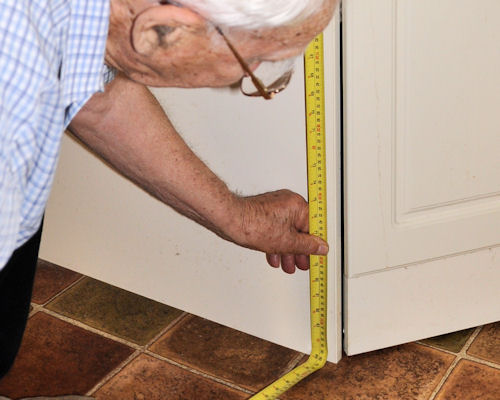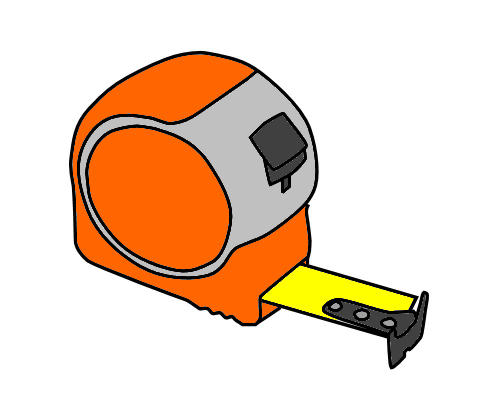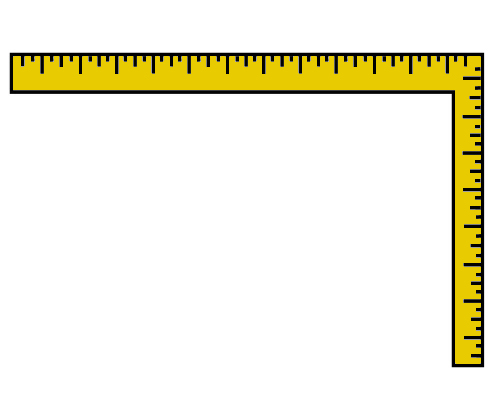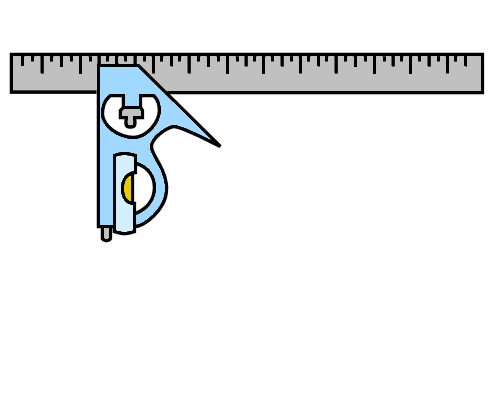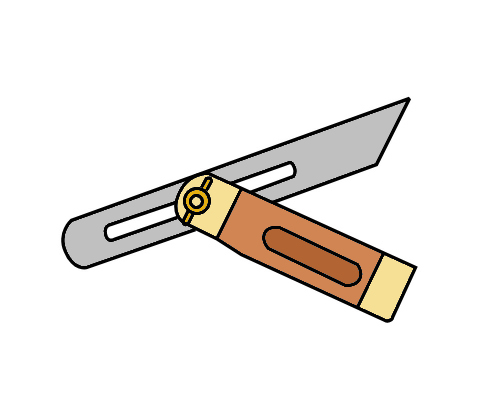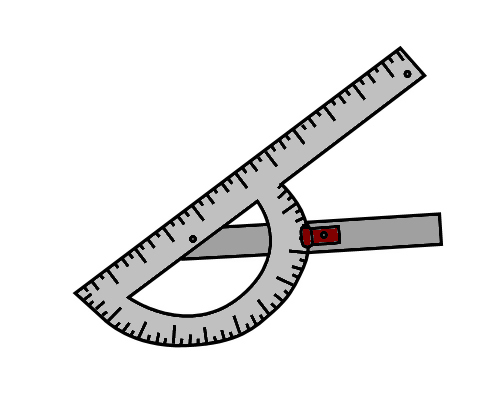Conventional equipment
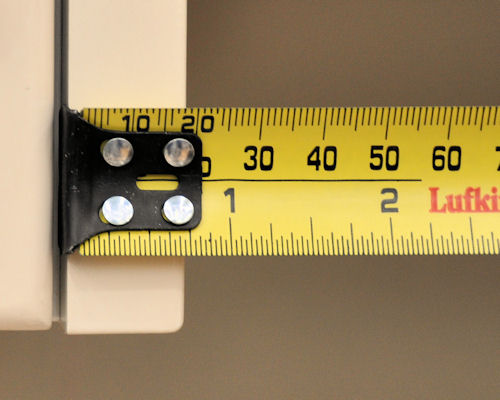 Audio for slide 3 (mp3 |6|KB)
Audio for slide 3 (mp3 |6|KB)
The amount of movement allowed is the same as the thickness of the hook.
The purpose of this movement is to compensate for the hook thickness when you either push the tape up against an object for an inside measurement, or hook it over the object for an outside measurement.

 Audio for slide 8 (mp3 |6|KB)
Audio for slide 8 (mp3 |6|KB)
Spirit level
Spirit levels come in many sizes, shapes and lengths. What they all have in common is that they have a vial, or tube, that contains a bubble floating in fluid. The level works on the principle that the bubble will find the highest point in the tube, because it is lighter than the surrounding fluid. Since the tube is curved slightly with the highest point in the middle, the bubble floats exactly in the middle when the level is horizontal.

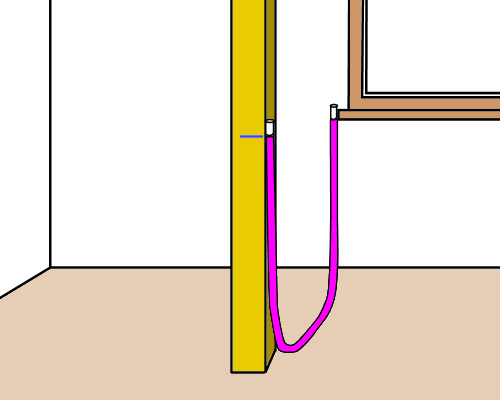 Audio for slide 10 (mp3 |6|KB)
Audio for slide 10 (mp3 |6|KB)
Water level
You can make a water level simply by getting a clear plastic hose and filling it almost to the top of both ends with water. Some people add food colouring to the water to make it easier to see. To use the level, put one end at the height you want to match, and the other end at the point where you want to transfer the line. When the water in the tube settles, the heights at both ends will be exactly level and you can mark the line.

Learning activity
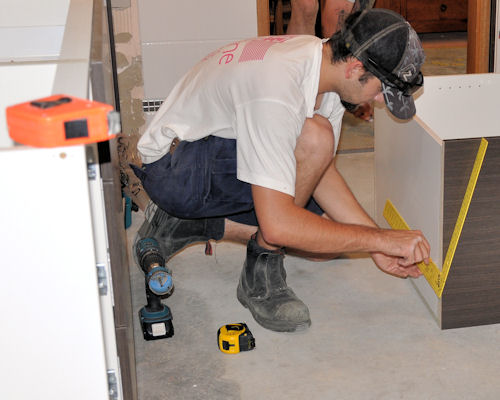 Audio for slide 11 (mp3 |6|KB)
Audio for slide 11 (mp3 |6|KB)
What devices do you use on-site for checking lengths, angles and levels? At this stage, don't include the electronic tools you use, because we'll talk about them in the next lesson. Share your answers with your trainer and other learners in your group. If you are studying this unit remotely, you might want to take digital photos of the devices and send them through with your descriptions.



